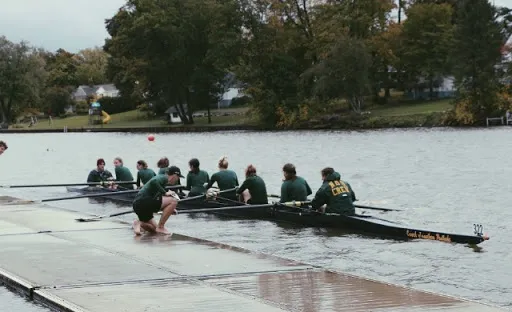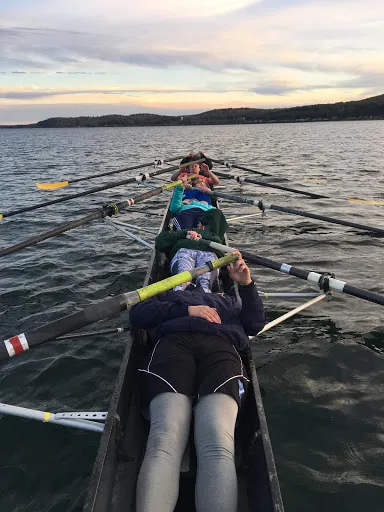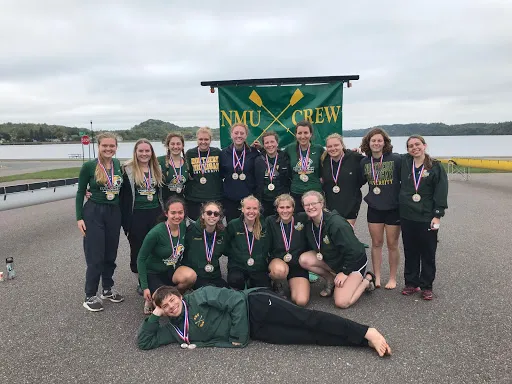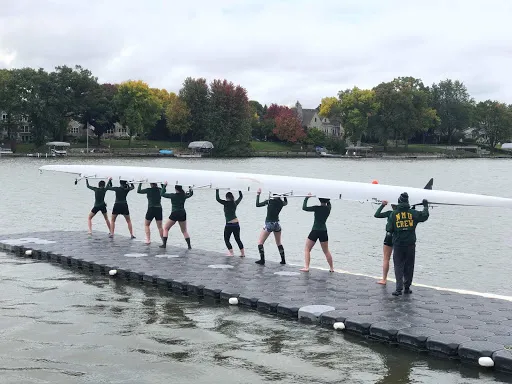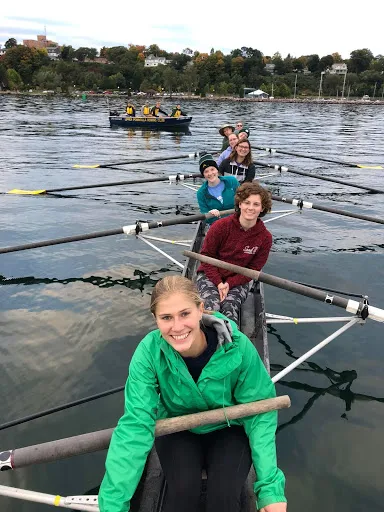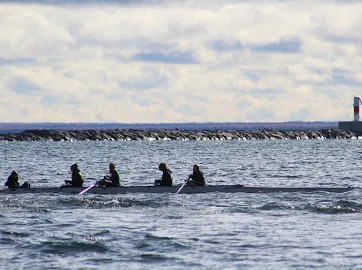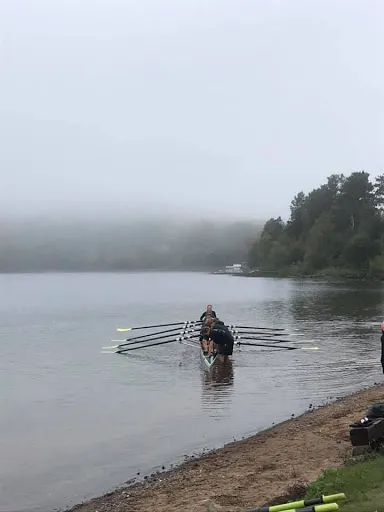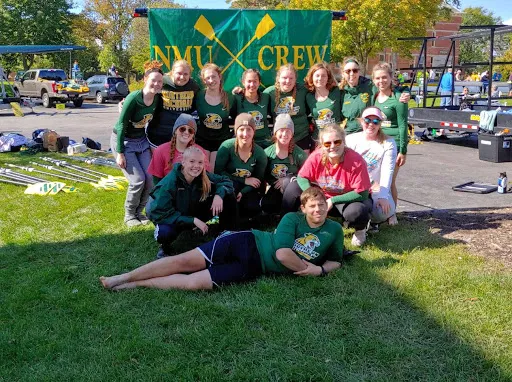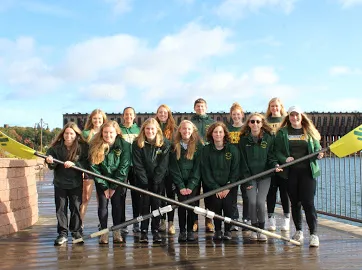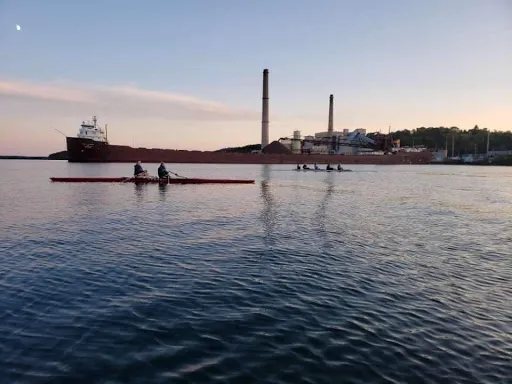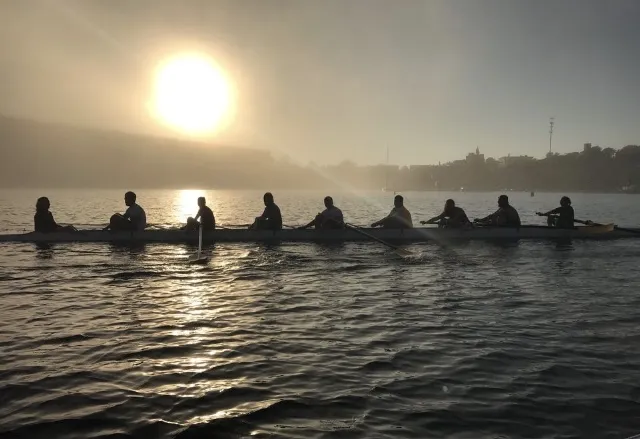
About the Team
At NMU Club Rowing, we believe in the power of our crew. Our mission is to create a space where student-athletes of all backgrounds feel supported and challenged. Through teamwork, discipline, and mutual accountability, we aim to grow not only as rowers, but as leaders, teammates, and individuals.
Joining the Team:
No experience is required to join - we will teach you all you need to know! The majority of our current rowers had never rowed before joining, so don’t be afraid to sign up! To sign up for the team, visit the NMU Rowing booth during Fall Fest. Additionally, you can email the team to be added to the email list.
All prospective rowers must pass a swim test to safely get into a boat and head out on the water. After, they are encouraged to attend learn-to-row sessions during Memorial Day weekend. Members must also have a student rec pass for fall and winter.
Our Season:
Our season is split into two sections: fall and winter. During the fall, we practice on the water and compete in regattas. Our practice times vary by year but are generally 4-5 days a week with a mix of evening and morning practices. In the winter, we are unable to get out on the water so we supplement with workouts at the PEIF.
Practices will be held at the Upper Peninsula Community Rowing Club (UPCRC) boathouse near Gaines Rock and the Hampton Inn, in addition to workouts at the PEIF when weather does not allow for safe on-the-water practices. Athletes will also be given a workout to complete on their own time during the weekend.
Dues:
Our dues are around $250 per rower and will be paid in two separate installments. These dues go towards UPCRC fees, regatta fees, US Rowing registration, transportation, and other miscellaneous expenses.
Contact: Callie Pakkala, crew@nmu.edu
Team Roster
Coming Soon
Rowing Terms
Blade: The oar, also the end of the oar which is placed in the water.
Bow: The front end of the boat; also used as the name of the person sitting nearest the bow.
Catch: The oar blade entering the water at the beginning of the stroke.
Collar (or Button): a plastic or metal fitting tightened to the oar to keep the oar from slipping through the oarlock.
Crab: A stroke that goes bad. The oar blade slices into the water at an angle and gets caught under the surface. A bad crab can catapult you out of the boat.
Check-it- Down (or Hold water): Hold the blades perpendicular in the water to stop the boat.
Feathering: Turning the oar blade flat during the recovery to lessen wind resistance.
Fin (or Skeg): A small flat appendage located along the stern section of the hull which helps stabilize the shell in holding a straight course.
Finish: The oar blade leaving the water at the end of the stroke.
Foot Stretcher (or Clog or shoes): An adjustable bracket in a shell to which rowers feet are secured.
Gunwale (or gunnel): That part of the shell which runs along the sides of the crew compartment through which the riggers are bolted.
Handle: The end of the oar you hold in your hand.
Keel: The center line of the shell
Oarlock: A U-shaped swivel which holds the oar in place. It is mounted at the end of the rigger and rotates around a metal pin. A gate closes across the top to keep the oar in place.
Paddle: Easy rowing, no power.
Port side: Left side of the boat, as facing the bow.
Recovery: The time between strokes, the oar blade traveling through the air.
Rigger: The assembly of tubes which are tightly bolted to the hull to which are attached an oarlock.
Rigging: The adjustment and alteration of accessories (riggers, foot stretchers, oar, etc.) in and on the shell to maximize a particular rowers efficiency, based on their size and capabilities.
Rudder: Device used to steer the shell.
Scull: This term is used interchangeably: to the oars used in sculling, the sculling shell itself; or the act of rowing in a sculling shell.
Shell: The racing boat; Term for rowing boat.
Slide: The track on which the seat moves.
Slings: Collapsible/portable frames with straps upon which a shell can be placed.
Split: The time a crew takes to complete a 500 meter segment of the race.
Starboard: Right side of the boat facing the bow.
Stern: The rear end of the boat.
Stroke: Apart from the rowing action, this can also mean the person who sits in the stern of the boat and sets the pace for the crew.
Weigh-Enough: Stop.

